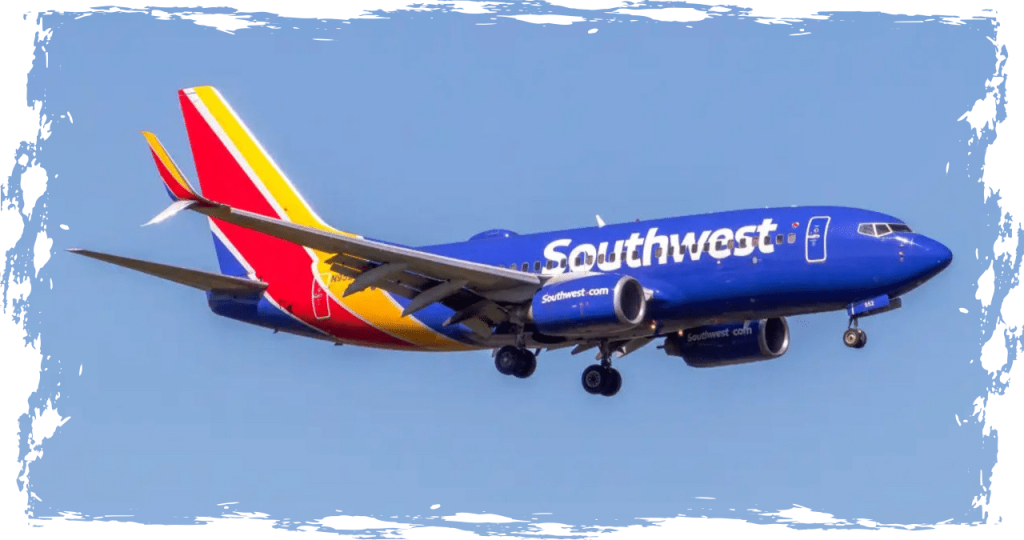According to a report, a Southwest Airlines flight narrowly avoided crashing into the ocean off the coast of Hawaii by just 400 feet after deciding to abort a landing due to unfavorable weather conditions.
Last week, Southwest Airlines sent a memo to its pilots, which was obtained by Bloomberg, revealing that during an April flight, the Boeing 737 Max 8 aircraft experienced a sudden drop of several hundred feet in just a matter of seconds. Fortunately, the flight crew was able to take corrective action in time to prevent a tragic crash.
According to the airline, there were no injuries reported among the passengers on the flight.
According to flight data from ADS-B Exchange, Southwest Flight 2786 had to abort its landing due to unfavorable weather conditions and was flying at an altitude of around 1,000 feet. However, the aircraft suddenly dropped to a dangerously low altitude of 400 feet above sea level.
According to Bloomberg, the descent occurred at a staggering speed of over 4,000 feet per second.
With a sense of panic, the pilot hastily initiated a rapid ascent, striving to reach greater altitude as quickly as possible.
According to Kit Darby, a former commercial airline pilot and flight instructor, the pilot was experiencing intense fluctuations in altitude and power, bordering on losing control. Darby likened the experience to that of a roller coaster ride, with the aircraft pitching up and down erratically.
According to the memo, the captain had put the “newer” first officer in command for the short flight from Honolulu to Lihue Airport. The plane had already departed at that point.
As the plane descended towards the airport, the pilot made a quick decision to abort the landing due to poor weather conditions obstructing their view of the runway.
According to the memo, the controls were pushed forward by the first officer while monitoring the thrust level, which is controlled by the plane’s automatic throttle, in an “inadvertent” manner.
In order to adjust for the situation, the pilot reduced the speed of the airplane, resulting in a sudden and steep descent. This action triggered various alarms to sound throughout the aircraft.
According to the memo, the captain instructed the first officer to boost the thrust, resulting in the plane climbing at a rapid rate of 8,500 feet per minute.
The aircraft safely landed in Honolulu upon its return.
In an interview with Bloomberg, Darby explained that airplanes typically descend gradually at a rate of 1,500 to 2,000 feet per minute as they near their destination. Once within five miles of the airport, the aircraft reaches a height of approximately 800 feet.
In response to the incident, Southwest stated to The Post that safety is of utmost importance to the airline.
According to the spokesperson, their Safety Management System played a crucial role in addressing the event effectively. They always aim for continuous improvement and take the necessary steps to ensure the safety of all involved.
In a memo, SouthWest emphasized the importance of improved communication among crew members. The company acknowledged that it needs to review industry and internal data to assess whether protocols and training need to be updated.
Bloomberg reported that the incident is currently under investigation by the FAA.
Just a month ago, a British man who was 73 years old lost his life due to severe turbulence on a Singapore Airlines Boeing flight. The incident caused the plane to drop 6,000 feet, and as a result, unrestrained passengers were thrown into the overhead bins. Similarly, a recent scary mishap occurred, which highlights the dangers that can arise during air travel.
During a Boeing 777 flight from London to Singapore on May 21, 30 passengers suffered injuries.
According to the Transport Safety Investigation Bureau of Singapore, the sudden shift in gravitational force probably caused the individuals who were not wearing seat belts to be propelled into the air, while the subsequent shift caused them to fall back down.
Read More:
- Celebrity chef raised in Oregon is opening a new restaurant in his hometown of Bend
- Woman from Arkansas detained for involving a child in a Medicaid fraud worth $9,500
